Horror in Paradise Read online
Page 5
But somehow the Americans lived. Not well, but they lived. They grew thinner. Their desperation grew sharper.
The weird life around them drove them into an ever more intense solidarity. They were called upon to do almost no work and knew they were expendable. Their boredom, their ignorance, their shared desperation, their proximity, their gossip made them oddly identical. Rumors became more important than food, were hashed and rehashed, reexamined from different points of view, taken as rumor at first, but quickly hardened into “facts.” There was still a hierarchy among them, but what they thought, the inside of their minds, came to be strangely similar.
They discussed the possibility of capturing one of the boats and trying to escape by night. They debated it endlessly and then one day were given their answer. Three of the stronger Japanese ventured out in the boat to do some fishing. The boat was heavily camouflaged and looked like nothing so much as a piece of drifting seaweed. However, it was no farther than a few hundred yards from the shore when a Corsair came hurtling over the horizon, drew a pinpoint bead on the boat, and strafed it. All three Japanese were killed; the boat sank. The Americans knew that other boats were buried about, and it would probably be easy to steal one, but they knew they would be strafed before they could escape.
They talked again. They racked their brains for solutions. But now the months of isolation, the awareness of the vastness of the ocean about them, and a growing irrationality because of the inadequate diet had reduced their perceptiveness. They dared not even argue among themselves any more. Each man sensed that an argument, an act of selfishness, a misunderstanding might set them at one another’s throats, snarling like hyenas. They whispered gently to one another.
At one point a B-24 bomber bombed Wake and then came in low and slow for a strafing attack. By now long experience and a diminishing supply of ammunition made the
Japanese antiaircraft gunners extremely accurate. They waited and then at the plane’s lowest elevation opened fire. The plane was mortally damaged, made a slow burning circle in the sky and finally crash-landed at the edge of Wilkes. The Japanese commanding officer made a decision. The fliers were tried and then killed, and parts of their bodies were eaten in a Bushido ritual. Only the heart, liver and lights were eaten by the Japanese. There were those among them who would have willingly eaten the entire bodies, but they were not given the chance. After the ceremony the remains were given a ceremonial burial.
On the day of October 6, 1943, the tension grew greater, stretching the nerves and rationality of the ninety-eight men to the very limit.
That day American planes, clearly flying from carriers, made a savage raid on Wake. The dive bombers picked their targets at leisure and then dived. The fighter planes shrieked up and down the atoll, shooting at anything that moved or was above the surface. A chance incendiary set one of the buried fuel dumps on fire so that the very coral itself seemed to be burning with an inexhaustible flame.
The Americans peered up at the attacking planes, torn between pride in the bombing and fear of death.
That night the ninety-eight began another, and the last, of their long whispered and very intense conversations. They knew only four facts for certain. First, the fighter planes had stayed so long over the target that the task force from which they came could not be far over the horizon. Secondly, the Japanese were rapidly weakening. Hundreds hung at the edge of starvation. Third, the ninety-eight were now starting to show the signs of malnutrition, and starvation was probably not far away for them. Fourth, they knew that the only feasible location for a landing was on the lee side of the island, with the best stretch being at the channel that separated Wake from Wilkes Island. This is all that the ninety-eight could have known. All other facts were denied to them. The Pacific, unending and silent, told them nothing and allowed nothing to be told.
Sometime during the night of October 6, in their low-pitched but deadly serious conversation, these four facts fused into a common agreement: they were to be rescued the next morning, at the juncture of Wilkes and Wake, by an American task force. So identical had the ninety-eight become, so smooth their method of communication, that their unanimity was as solid as a fused granite boulder. Not a man doubted that the task force would reach them.
The emaciated men now began to act with an incredible deadly efficiency. They called to the guards who, unsuspectingly, opened the doors and looked in. They were seized by the throat by powerful hands and strangled. Their bodies were thrown into the barracks and the ninety-eight began to move across Wake.
With an eerie quality, almost a ghostliness, they flitted past the innumerable dugouts and posts. When a Japanese head did appear and question them, the closest man would simply reach out, and with a strength of desperation, choke the questioner to death. In an area which was so crowded with persons, the passage of skilled and trained Marines would have been a miracle. Also, every Japanese on the island had become sensitive to even the smallest sound in the coral: it might be a rat or a land crab. Contrary to popular belief, starving men do not sleep a deep exhausted sleep. They sleep lightly, restlessly, nervously. But the ninety-eight filtered past dugouts, around command posts, past sentries, by a manned radar station, and finally came to the last pillbox which overlooked the channel between Wake and Wilkes. Quietly, without a word, they made a vicious silent assault on the pillbox. They captured it and killed every occupant without raising an alarm. Then they waited, gazing out over the ocean with utter confidence for the arrival of the dawn and the American task force.
Dawn came, pink and soft, and then passed into the brassy light of early morning. The sea was empty. Still the ninety-eight did not lose confidence. No one panicked. No one proposed doing anything except precisely what they were doing.
It was at this moment that the Japanese discovered what had happened. They quickly organized several companies into search parties, fully armed and carrying hand grenades. They searched Peale and found nothing. Then they started, in a line abreast, to sweep down Wake. They searched every dugout, every shell hole, behind every rock. As the Japanese skirmish line got to the narrow end of Wake, it grew denser and denser. The Americans waited unperturbed. Between them they had six guns and a small amount of ammunition. They looked out to sea calmly, and then back at the approaching Japanese. There was no hysteria, no whining, no defection.
The ninety-eight prepared to resist the hundreds of fully armed Japanese. They fought with their six guns, rocks, sticks, and some with their bare hands. It was short, bloody, and final. In a half hour, fifty of the ninety-eight had been killed.
The forty-eight Americans that were left stood in the welter of blood and bits of flesh, dazed by the explosion of hand grenades, but curiously calm. As the Japanese surrounded them they still looked out over the ocean, still hopeful that deliverance would come.
It did not. Prodded by bayonets and rifle butts, the remaining forty-eight formed two lines and marched back up Wake. They were taken to the north shore. There they were given shovels and ordered to dig their collective grave. They did this calmly and without protest or remorse. Occasionally one of the Americans would stand up, wipe sweat from his forehead, and gaze confidently out at the horizon. The Japanese watched in puzzlement as the Americans quietly went about their last mortal task. When the grave was dug, the Japanese were still suspicious. They bound the Americans hand and foot and then backed cautiously away from them. The Americans gazed impassively at the Japanese, uncomprehending. Then they looked again at the blue encircling Pacific, scanned it as they had scanned it for years. They smiled at one another with confidence, sharing some secret which was denied their captors. They had passed some psychological point of no return and now were ready for whatever consequences followed.
At a command from a Japanese officer, machine guns began to chatter and rifles to crack. The forty-eight were smashed back into the grave by a solid hail of bullets. A few moments later not one of them was alive. The Japanese covered them over with sand and coral.
/>
In 1946, Admiral Sakaibara and Lieutenant Commander Tachibana and fourteen others were sentenced to hang by the military commission which was convened on Kwajalein to investigate the circumstances of the deaths of the ninety-eight.
This was done.
Clifford Gessler
Phantoms and
Physicians on Tepuka
Born in Milton Junction, Wisconsin, in 1893, Clifford Gessler, journalist and poet, served from 1924 to 1934 as telegraph and literary editor of the Honolulu Star-Bulletin. Seeking a change, he joined the Mangarevan Expedition of the Bernice P. Bishop Museum and in 1934 sailed to the Tuamotu group on the ninety-foot sampan Islander. He and Kenneth P. Emory (“Keneti”) were the only outsiders on the atoll of Tepuka Maruia (the place of the puka tree) from May 15 to July 29, 1934, and closely shared the lives of the Polynesian inhabitants. Two uncanny selections are taken from his 1937 volume, Road My Body Goes.
Gessler then went on the cutter Tiare Tahiti, by way of Vahitahi and several other islands, to Papeete, where he spent some time as a penniless beachcomber. His later adventures, wandering among the Tuamotu, Austral, and Society groups, are told in The Leaning Wind (1943).
GHOSTS
SOME time in the night of our first day on the island, I was awakened by a sound as of pebbles thrown against the side of the house. It was not a loud sound, but a definite one, and the pauses between were as of someone listening.
My first thought was that an early-rising pig or chicken had wandered against the house, but the beam of an electric torch, flashed into the darkness, revealed no living thing.
“Somebody is playing tricks,” I concluded, though in view of the absence of cover for such a trickster to hide near the house, and the known reluctance of Tuamotuans to venture out at night without a light, this explanation was slightly lame.
“It was without doubt a spirit,” said our neighbors next morning.
Such stone-throwing ghosts are common in the Tuamotu, the more so in the “civilized” iron-roofed islands where they can make more noise. All the islands are haunted; the imagination of the Polynesian has peopled his darkness, often with shapes of fear. The spirits of the newly dead wander abroad, seeking literally whom they may devour. This latter propensity of the nocturnal apparitions was less emphasized at Tepuka, and there may have been some connection of this omission with the contention, plausible enough, of the people of that island that they had never been cannibals. On the former man-eating islands, such as Vahitahi and Hao, it is a natural transition, as Stevenson pointed out long ago, from the eating of the dead by the living to the eating of the living by the dead, and a certain kind of spirit is therefore as greatly feared as the werewolves and vampires of medieval Europe. Nevertheless, the haunted darkness of the coconut groves was regarded with extreme caution by our friends and neighbors; nor would they sleep at night without a light in the house: a dim and smoky lantern, turned low, or if, as often happened, oil failed, a wedge of copra burning, propped upon a stone.
Our friends, however, were not alarmed on our behalf. It seemed, or so I understood, that the pebble-tossing spirits were not especially harmful. The visitation of the night might be interpreted as a favorable omen rather than otherwise, signifying that the island spirits recognized our presence and were making us welcome. Moreover, the white man usually is immune from the attacks of the powers of Polynesian darkness. How else explain his recklessness in violating native custom, in sleeping without a light, in eating under a roof, in transgressing any number of prohibitions that have grown up in the half-light of remembered experience in these haunted lands?
I had occasion to observe this fear of the beings of darkness later when at her request I accompanied the daughter of Maru on an errand to the house of a relative, somewhat remote from the main village. Temata led me along the road that leads to the cemetery, but struck away from it into the forest before we reached that point. She was taking no unnecessary chances.
Among the trees, however, she showed increasing alarm. Every large bush, every oddly shaped shadow, caused her to clutch at me in fear. In the gloomiest portion of the wood, an ominous shape appeared suddenly out of the blackness and lurched across our path—a figure of more than human size, it seemed, and of scarcely human shape, with a great antlered head nodding through the gloom.
My companion, in terror, buried her face in my shoulder; I could feel her whole body quivering with fright.
“Let there be life!” said the apparition, and Temata burst out laughing with relief She had recognized the voice of one of her own living relatives.
Our “ghost” was only an honest citizen of Tepuka who had been bold enough, or forced by necessity, to go out at night alone, and the oddity of shape was merely the effect, in the darkness, of the burden he carried on his shoulders.
On the way back, as we hurried over the stony paths that her bare feet knew so well and mine so poorly, I told her that she was safe with me, for the spirits had no power over a white man. She seemed to accept this, but I think she remembered it, not without a trace of malice, at a later time, when, the spirits having apparently punished me for some trespass, she said, “It serves you right!”
Others told us that the dead rise at night and walk about the village, “in their habit as they lived,” indistinguishable from the living, except as they are recognized for individuals who have long since departed this world. For that reason, the road that leads past the small and relatively new cemetery of Tepuka is avoided at night. Nor, we gathered, is this return confined to the dead there interred, whose demise scarcely can antedate the last hurricane. The more ancient dead, it seems, arise from the sea and visit the scenes of their former life.
Surrounded by an atmosphere of such beliefs, one easily slips into the feeling that, after all, anything might be possible. In a spirit half serious, half humorous, I walked out, on a fine evening, down the forbidden street. Far to the left, toward the lagoon shore, lights gleamed through the trees from the houses clustered there. A brighter light moved a torch fisherman, probably, emboldened by hunger to venture abroad at night. If so, he was the only torch fisherman I saw in my time on the island. The early moon cast dense black shadows on the white sand of the road; the forest on either side was dark, and its clumps of pandanus and toumefortia resembled not at all their daylight aspect. It was easy to understand how the mind of the native could populate that darkness with menacing shapes.
The cemetery, however, looked harmless enough: a bare, low-walled quadrangle, lately weeded and swept, in which the few graves, with their wooden crosses, their withered wreaths, seemed lost and lonely in the expanse of moonlight. I walked slowly past; no vampire figure arose. At the end of the road, I sat for a while on the stone curbing, looking out at the sea which rustled softly on the reef. It was a peaceful spot: one could be alone here with the sea and sky, the hard clean stony land, and whatever spirits might be awake.
The evening meeting would be over by now; the dance would be beginning at the house of Maukiri. I walked back slowly through the sand of the road, pausing to sit for a few minutes on the cemetery wall. Perhaps it was the moonlight, perhaps my Western unbelief—but the enclosure of the dead gave up no visible spirit, emitted no ghostly sound. I was to remember, with a question, that moonlight vigil when, long afterward, the tahunga shook his head, saying, “You have walked too near a grave.” But that evening, as I slid down from the wall and continued my way toward the lighted houses, I thought only of Walter de la Mare’s traveler who knocked at the moonlit door, and nobody answered; how, as he turned to go, “Tell them I came,” he said, and how “the silence surged softly backward, when the plunging hoofs were gone.”
I WALK TOO NEAR A GRAVE
I HAD begun to think that the Dangerous Islands—with the exception of Reao—were a more healthful environment than many more civilized places.
And then, it seems, I walked too near a grave!
It started with that tiny eruption, like a heat blister, on the b
ack of the little finger of my left hand. We never could trace the source of it to any known injury. Perhaps a sliver from a mat; one of the small thorns that arm the edges of pandanus leaves; these are but random guesses. Perhaps some decaying sea growth in the partly enclosed warm water of the lagoon, where we swam, generated a poison. Now my whole body was afire with it.
On my return from Tepoto, Keneti and I opened the infected area with a sterilized pair of scissors and treated it with such medicines as we had. Next day the entire hand was swollen as far as the wrist, and the finger itself was larger than a thumb.
Keneti was plainly worried.
“We’re not getting anywhere with this. If the Vaite were here I’d send you back to Papeete aboard her. I’d be afraid to risk you on the Tiare Tahiti; we couldn’t treat the wound properly, and it would be hard to keep sea water out of it. All the natives say sea water is bad for these things.”
But the Vaite was far away. There was no available contact with civilization; no communication. Even had there been a ship available, I might have reached hospitals and physicians too late. We must depend on our own meager resources, and those of the natives.

![[What Might Have Been 02] Alternate Heroes Read online](http://i1.bookreadfree.com/27/what_might_have_been_02_alternate_heroes_preview.jpg) [What Might Have Been 02] Alternate Heroes
[What Might Have Been 02] Alternate Heroes![[What Might Have Been 01] Alternate Empires Read online](http://i1.bookreadfree.com/01/what_might_have_been_01_alternate_empires_preview.jpg) [What Might Have Been 01] Alternate Empires
[What Might Have Been 01] Alternate Empires SEDUCTIVE: A Contemporary Romance Anthology
SEDUCTIVE: A Contemporary Romance Anthology A Year of Love
A Year of Love Super Daddies: A Naughty Nerdy Romantic Comedy Anthology
Super Daddies: A Naughty Nerdy Romantic Comedy Anthology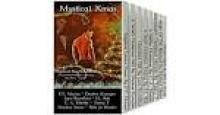 Mystical Xmas: Paranormal Romance Anthology Box Set
Mystical Xmas: Paranormal Romance Anthology Box Set![[What Might Have Been 04] Alternate Americas Read online](http://i1.bookreadfree.com/06/what_might_have_been_04_alternate_americas_preview.jpg) [What Might Have Been 04] Alternate Americas
[What Might Have Been 04] Alternate Americas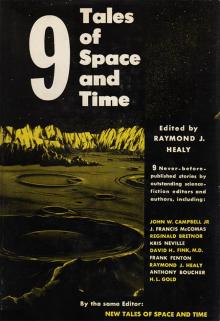 9 Tales of Space and Time
9 Tales of Space and Time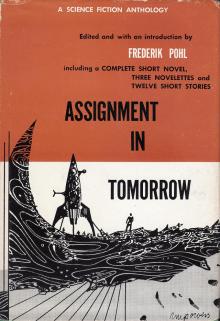 Assignment in Tomorrow
Assignment in Tomorrow![[What Might Have Been 03] Alternate Wars Read online](http://i1.bookreadfree.com/i/03/16/what_might_have_been_03_alternate_wars_preview.jpg) [What Might Have Been 03] Alternate Wars
[What Might Have Been 03] Alternate Wars The Complete Dangerous Visions
The Complete Dangerous Visions The IF Reader of Science Fiction
The IF Reader of Science Fiction Holiday in the Heart
Holiday in the Heart Torquere Press Sips and Shots
Torquere Press Sips and Shots Possess: An Alpha Anthology
Possess: An Alpha Anthology Beyond Control
Beyond Control Bad Boys Under the Mistletoe: A Begging for Bad Boys Collection
Bad Boys Under the Mistletoe: A Begging for Bad Boys Collection Hugo Awards: The Short Stories (Volume 3)
Hugo Awards: The Short Stories (Volume 3) The Second IF Reader of Science Fiction
The Second IF Reader of Science Fiction Astounding Science Fiction Stories Vol 1
Astounding Science Fiction Stories Vol 1 What Happens Over Spring Break: A Short Story Anthology
What Happens Over Spring Break: A Short Story Anthology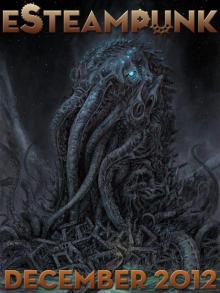 eSteampunk Vol. 01 No. 02
eSteampunk Vol. 01 No. 02 SHADOWRUN: Spells and Chrome (shadowrun)
SHADOWRUN: Spells and Chrome (shadowrun) Dark Tales
Dark Tales Getting Schooled (Craving #9)
Getting Schooled (Craving #9) The Hellfire Book of Beltane Volume One
The Hellfire Book of Beltane Volume One The Alpha's
The Alpha's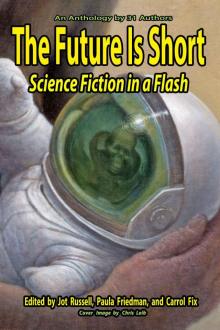 The Future Is Short
The Future Is Short From the Heart: A Valentine's Day Anthology
From the Heart: A Valentine's Day Anthology Reckless: A Bad Boyz Anthology
Reckless: A Bad Boyz Anthology LOL #3 Romantic Comedy Anthology
LOL #3 Romantic Comedy Anthology A Christmas Seduction: A Regency Anthology
A Christmas Seduction: A Regency Anthology All a Cowboy Wants for Christmas
All a Cowboy Wants for Christmas Hugo Awards: The Short Stories (Volume 2)
Hugo Awards: The Short Stories (Volume 2) The Golden Age of Science Fiction Novels Vol 01
The Golden Age of Science Fiction Novels Vol 01 The Sirens of SaSS Anthology
The Sirens of SaSS Anthology Mistletoe & Kisses
Mistletoe & Kisses Explorers of Space
Explorers of Space Time Travel Omnibus Volume 2
Time Travel Omnibus Volume 2 Dead Science: A Zombie Anthology
Dead Science: A Zombie Anthology Beer Goggles Anthology
Beer Goggles Anthology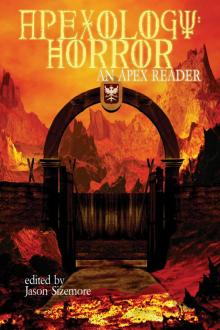 Apexology: Horror
Apexology: Horror Heat Wave: A Summer Loving Anthology
Heat Wave: A Summer Loving Anthology Fall in Love
Fall in Love Love Under the Mistletoe
Love Under the Mistletoe Hook & Ladder 69: Eighteen Authors...One Sexy Firehouse.
Hook & Ladder 69: Eighteen Authors...One Sexy Firehouse. LOL #2 Romantic Comedy Anthology - Volume 2 - Even More All-New Romance Stories by Bestselling Authors (LOL Romantic Comedy Anthology #2)
LOL #2 Romantic Comedy Anthology - Volume 2 - Even More All-New Romance Stories by Bestselling Authors (LOL Romantic Comedy Anthology #2)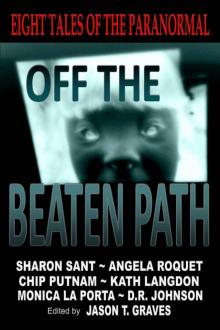 Off the Beaten Path: Eight Tales of the Paranormal
Off the Beaten Path: Eight Tales of the Paranormal![Best New Zombie [3] - Best New Zombie Tales, Vol. 3 Read online](http://i1.bookreadfree.com/i/03/25/best_new_zombie_3_-_best_new_zombie_tales_vol_3_preview.jpg) Best New Zombie [3] - Best New Zombie Tales, Vol. 3
Best New Zombie [3] - Best New Zombie Tales, Vol. 3 The Golden Age of Science Fiction Novels Vol 05
The Golden Age of Science Fiction Novels Vol 05 Alphas of Sin
Alphas of Sin Halloween Spirits: 11 Tales for the Darkest Night
Halloween Spirits: 11 Tales for the Darkest Night Night Shift 2
Night Shift 2 Ellora's Cavemen: Jewels of the Nile II
Ellora's Cavemen: Jewels of the Nile II Hot for the Holidays (21 Holiday Short Stories): A Collection of Naughty and Nice Holiday Romances
Hot for the Holidays (21 Holiday Short Stories): A Collection of Naughty and Nice Holiday Romances Of Heaven and Hell
Of Heaven and Hell 12 Christmas Romances To Melt Your Heart
12 Christmas Romances To Melt Your Heart '90s Playlist (Romance Rewind #1)
'90s Playlist (Romance Rewind #1) Bleed Blue 69: Twenty-Five Authors…One Sexy Police Station
Bleed Blue 69: Twenty-Five Authors…One Sexy Police Station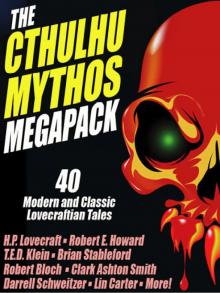 The Cthulhu Mythos Megapack (40 Modern and Classic Lovecraftian Tales)
The Cthulhu Mythos Megapack (40 Modern and Classic Lovecraftian Tales)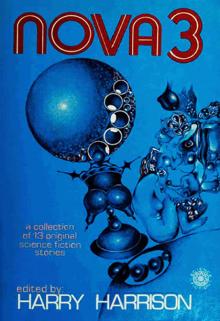 Nova 3
Nova 3 Unbroken: 13 Stories Starring Disabled Teens
Unbroken: 13 Stories Starring Disabled Teens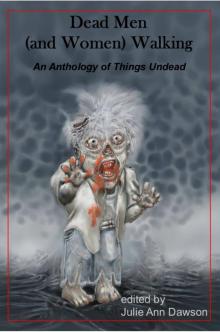 Dead Men (and Women) Walking
Dead Men (and Women) Walking Sweet Seduction
Sweet Seduction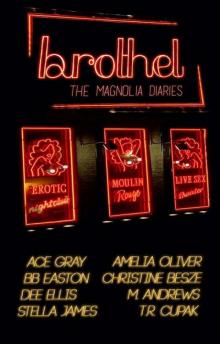 Brothel: The Magnolia Diaries
Brothel: The Magnolia Diaries Rogues (A Boys Behaving Badly Anthology #1)
Rogues (A Boys Behaving Badly Anthology #1) Best New Zombie Tales, Vol. 3
Best New Zombie Tales, Vol. 3![The Hellfire Bo [1] - The Hellfire Book of Beltane Volume One Read online](http://i1.bookreadfree.com/i1/04/06/the_hellfire_bo_1_-_the_hellfire_book_of_beltane_volume_one_preview.jpg) The Hellfire Bo [1] - The Hellfire Book of Beltane Volume One
The Hellfire Bo [1] - The Hellfire Book of Beltane Volume One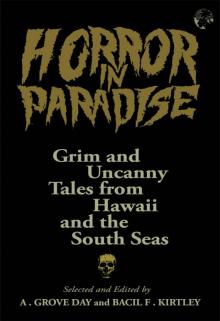 Horror in Paradise
Horror in Paradise Time Travel Omnibus Volume 1
Time Travel Omnibus Volume 1 More Than Words: Stories of Courage
More Than Words: Stories of Courage River Walk: Ten Kinky Collaborations
River Walk: Ten Kinky Collaborations F*cking Awkward
F*cking Awkward Hearts of England
Hearts of England The Golden Age of Science Fiction Novels Vol 03
The Golden Age of Science Fiction Novels Vol 03 Drunk in Love
Drunk in Love Up and Coming: Stories by the 2016 Campbell-Eligible Authors
Up and Coming: Stories by the 2016 Campbell-Eligible Authors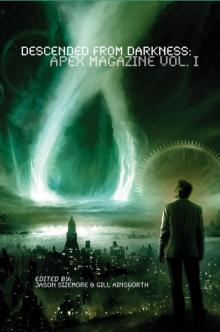 Descended from Darkness: Apex Magazine Vol I
Descended from Darkness: Apex Magazine Vol I Dominant Persuasions Anthology: 12 Tales of D/s, Where Mastery Meets Passion
Dominant Persuasions Anthology: 12 Tales of D/s, Where Mastery Meets Passion The Golden Age of Science Fiction Novels Vol 04
The Golden Age of Science Fiction Novels Vol 04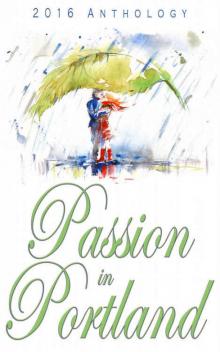 Passion in Portland 2016 Anthology
Passion in Portland 2016 Anthology Men of Mayhem
Men of Mayhem The Dirty Anthology
The Dirty Anthology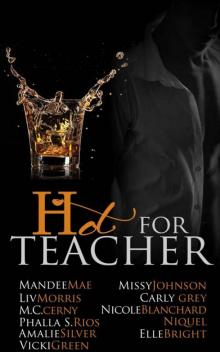 Hot For Teacher
Hot For Teacher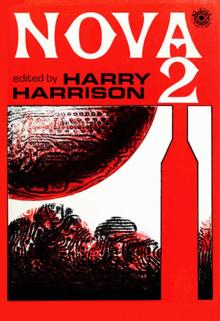 Nova 2
Nova 2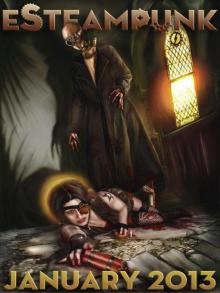 eSteampunk Vol. 01 No. 03
eSteampunk Vol. 01 No. 03 Afternoon Tea Mysteries Vol Three
Afternoon Tea Mysteries Vol Three Romance in the Rain
Romance in the Rain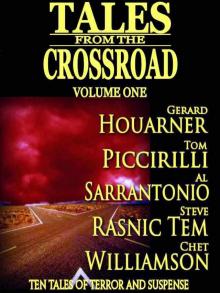 Tales From the Crossroad Volume 1
Tales From the Crossroad Volume 1 A Very Alpha Christmas
A Very Alpha Christmas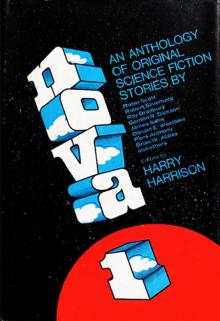 Nova 1
Nova 1 Once: A Collection of Sinfully Sexy and Twisted Tales
Once: A Collection of Sinfully Sexy and Twisted Tales Nuts About You: A Testicular Cancer Anthology
Nuts About You: A Testicular Cancer Anthology From the Street (shadowrun stories)
From the Street (shadowrun stories) Box of 1Night Stands: 21 Sizzling Nights
Box of 1Night Stands: 21 Sizzling Nights Descended from Darkness: Vol II
Descended from Darkness: Vol II Pink Shades of Words: Walk 2016
Pink Shades of Words: Walk 2016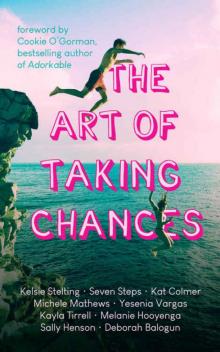 The Art of Taking Chances
The Art of Taking Chances The Butterfly Box_A SASS Anthology
The Butterfly Box_A SASS Anthology Harlan County Horrors
Harlan County Horrors![Afternoon Tea Mysteries [Vol Three] Read online](http://i1.bookreadfree.com/i2/04/12/afternoon_tea_mysteries_vol_three_preview.jpg) Afternoon Tea Mysteries [Vol Three]
Afternoon Tea Mysteries [Vol Three] The Golden Age of Science Fiction Novels Vol 02
The Golden Age of Science Fiction Novels Vol 02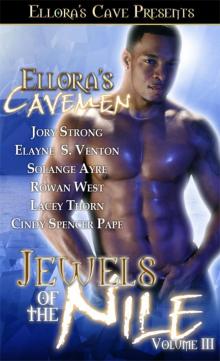 Ellora's Cavemen: Jewels of the Nile III
Ellora's Cavemen: Jewels of the Nile III